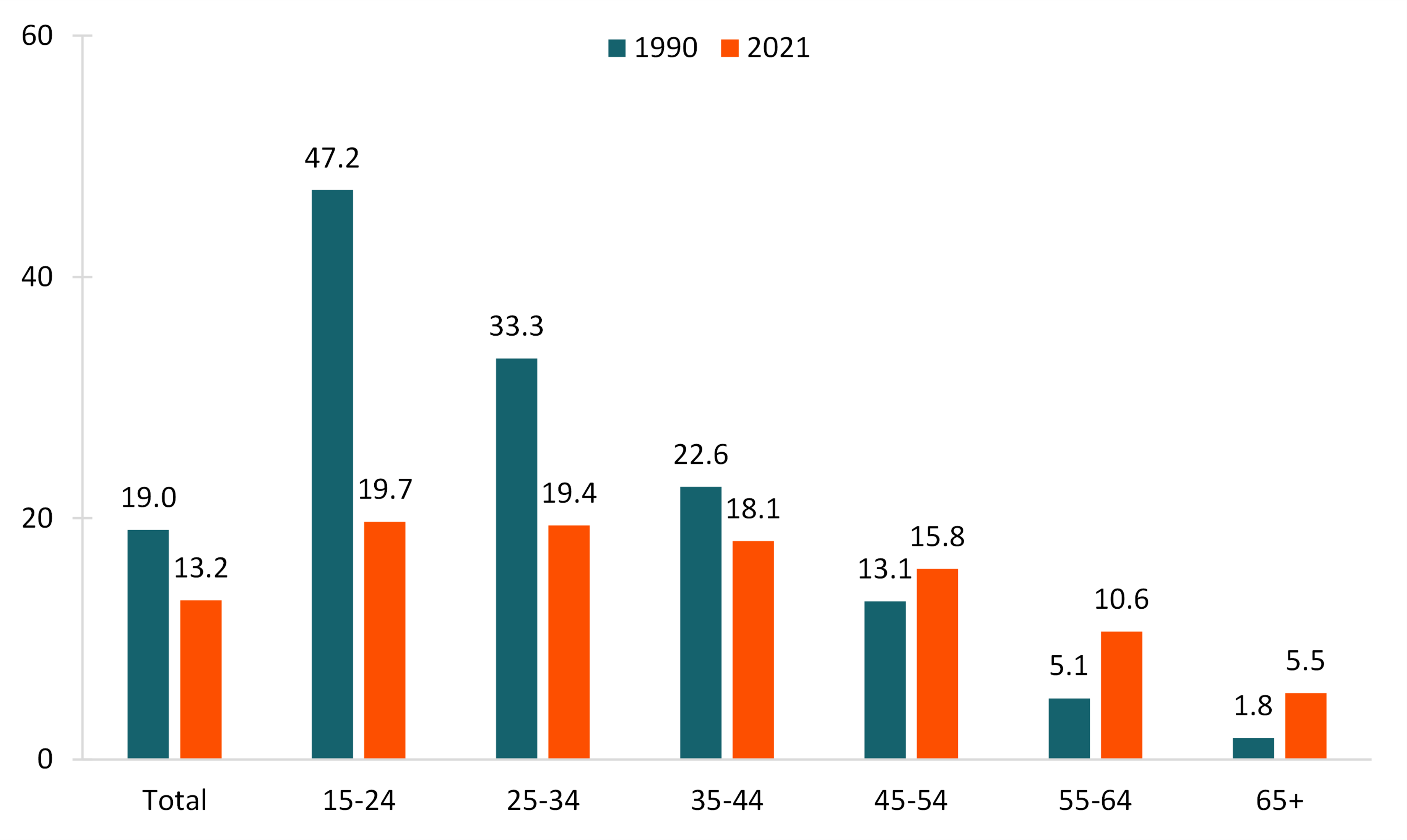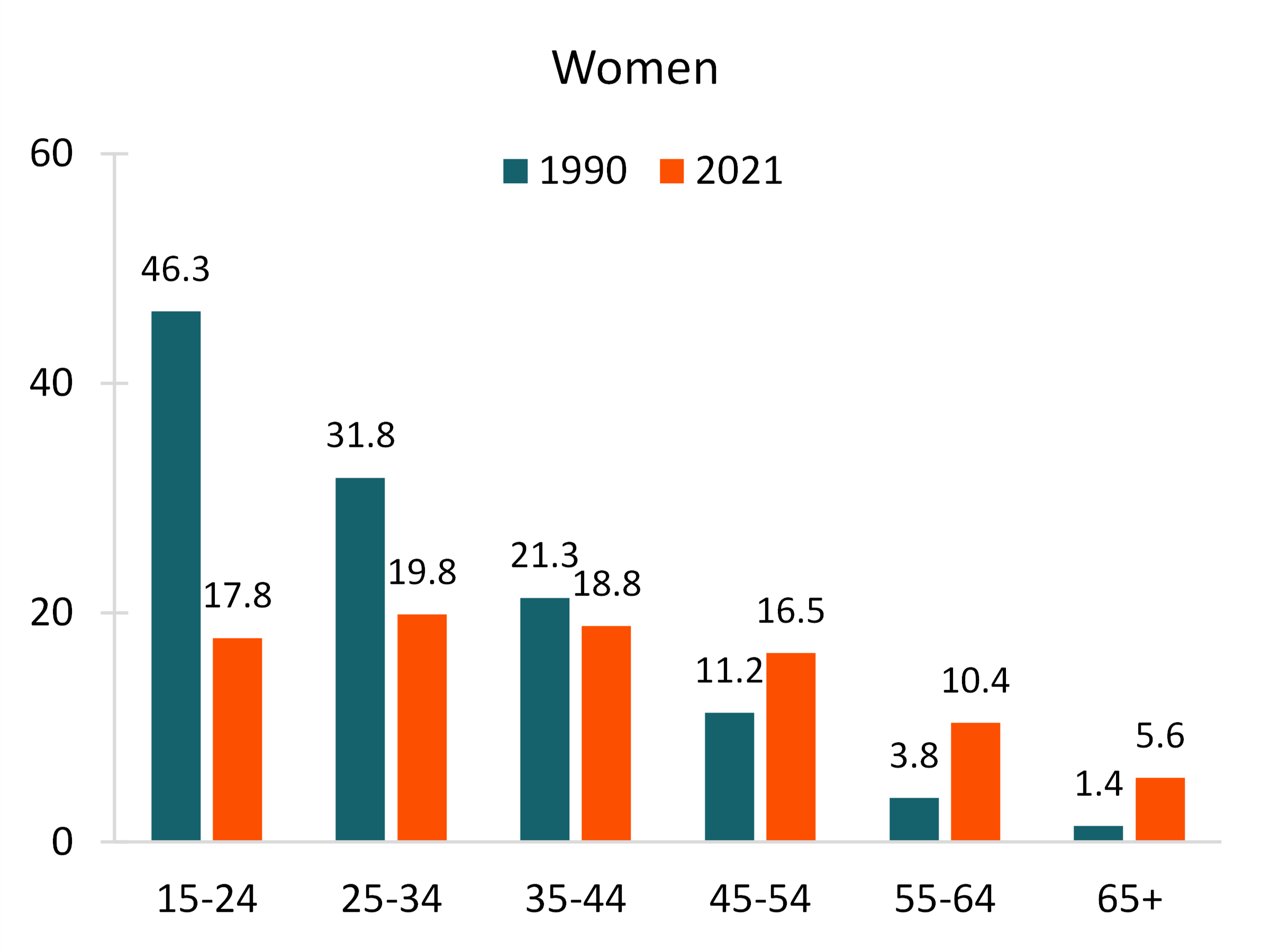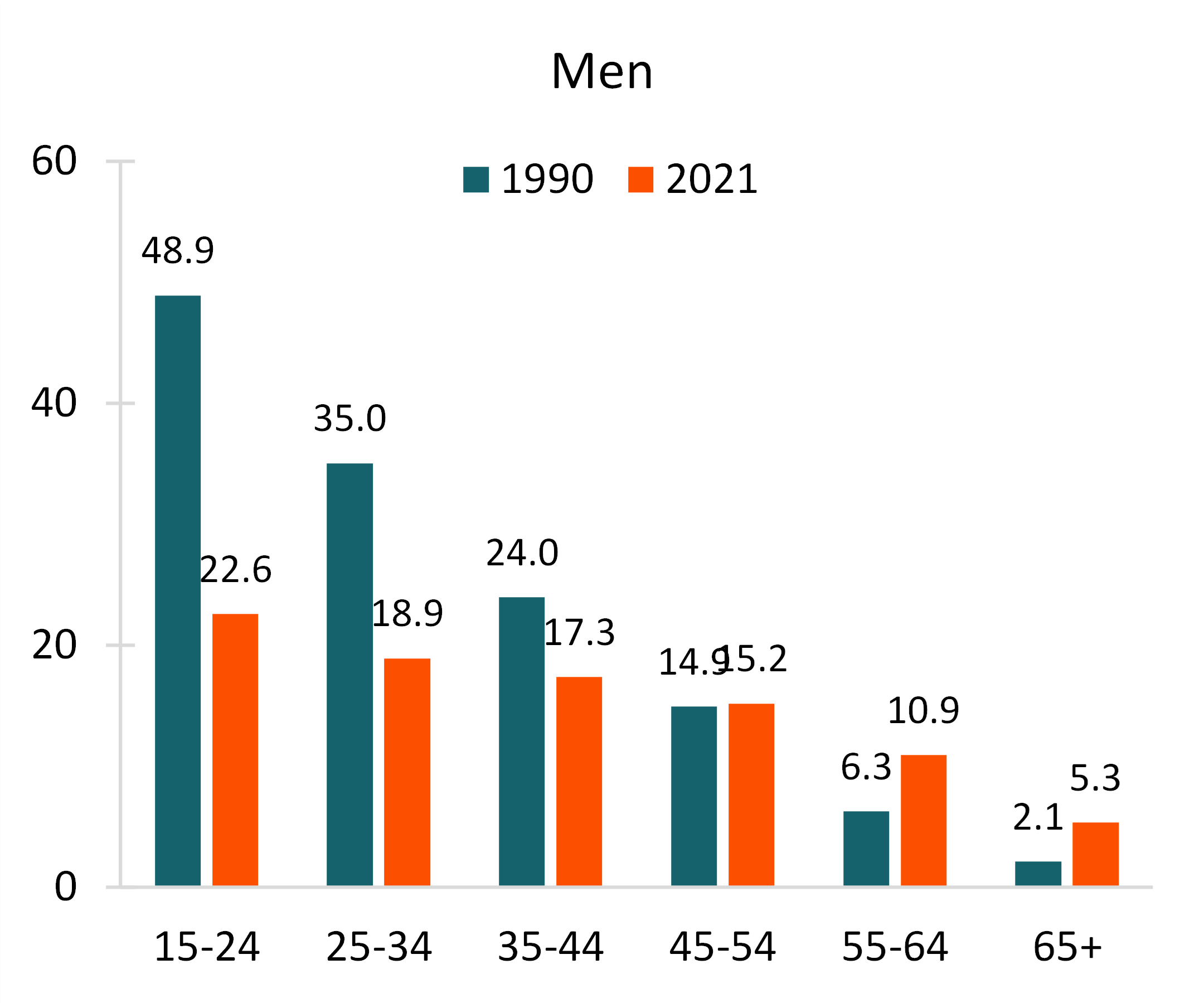Age Variation in the Divorce Rate, 1990 & 2021
Family Profile No. 16, 2023
Authors: Krista K. Westrick-Payne & I-Fen Lin
The divorce rate in the U.S. has declined in recent decades. In 1990, 19 people per 1,000 currently married individuals divorced compared to 13 per 1,000 in 2021. The overall trend in the divorce rate masks substantial variation by age. The divorce rate for younger people has been on the decline since the 1990s (Kennedy and Ruggles, 2014) whereas the divorce rate among those 50 and older has more than doubled since 1990 (Brown and Lin, 2012). This family profile updates FP-21-16 and charts the divorce rates by age groups in 1990 and 2021 using U.S. Census data and the 2021 American Community Survey provided by IPUMS-USA.
Divorce Rates by Age Group
- In both 1990 and 2021 the divorce rate declined with age.
- However, the age variation in the divorce rate was much smaller in 2021 than in 1990.
- The difference in the divorce rate between those aged 15 to 24 and those aged 65 and older declined dramatically, going from 47.2 per 1,000 compared to 1.8 per 1,000 in 1990 to 19.7 per 1,000 compared to nearly 5.5 per 1,000 in 2021.
- Between 1990 and 2021, the divorce rate decreased for those aged 15 to 44, whereas it increased for those aged 45 and older.
- The greatest decrease in the divorce rate was among those aged 15 to 24 (from 47.2 per 1,000 to 19.7 per 1,000).
- The greatest increase in the divorce rate was among those aged 65 and older in which the divorce rate tripled (from 1.8 per 1,000 to 5.5 per 1,000).
Figure 1. Divorce Rates by 10-Year Age Groups, 1990 & 2021

Divorce Rates by Age Group and Gender
- For both women and men, divorce rates tended to decline with age, a pattern that has remained unchanged over time.
- Between 1990 and 2021, the divorce rates decreased for women and men aged 15-44.
- At younger ages, the divorce rates for men exhibited the largest average decrease, however, the largest decrease among the ten-year age groups examined was among women aged 15 to 24 (from 46.3 per 1,000 to 17.8 per 1,000).
- Conversely, between 1990 and 2021 the divorce rates increased for both women and men aged 45 and older.
- At older ages, the divorce rates for women exhibited the largest average increase. The largest increase was for women aged 65 and older, increasing nearly four-fold from 1.4 per 1,000 in 1990 to 5.6 per 1,000 in 2021.
Figure 2. Divorce Rates by Age Groups and Gender


Data Source:
Centers for Disease Control and Prevention, National Center for Health Statistics, Vital Statistics, 1990
Ruggles, S., Flood, S., Sobek, M., Brockman D., Cooper, G., Richards, S., Schouweiler, M. (2023). IPUMS USA: Version 13.0 [dataset]. Minneapolis, MN: IPUMS. https://doi.org/10.18128/D010.V12.0
References:
Brown, S. L., & Lin, I.-F. (2012). The gray divorce revolution: Rising divorce among middle-aged and older adults, 1990-2010. The Journals of Gerontology Series B: Psychological Sciences and Social Sciences, 67(6), 731-741. https://doi.org/10.1093/geronb/gbs089
Carlson, L. (2021). Age variation in the divorce rate, 1990 & 2019. Family Profiles, FP-21-16. Bowling Green, OH: National Center for Family & Marriage Research. https://doi.org/10.25035/ncfmr/fp-21-16
Kennedy, S., & Ruggles, S. (2014). Breaking up is hard to count: The rise of divorce in the United States, 1980-2010. Demography, 51(2), 587- 598. https://doi.org/10.1007/s13524-013-0270-9
Suggested Citation:
Westrick-Payne, K. K. & Lin, I.-F. (2023). Age variation in the divorce rate, 1990 & 2021. Family Profiles, FP-23-16. National Center for Family & Marriage Research. https://doi.org/10.25035/ncfmr/fp-23-16
Updated: 11/12/2025 10:02AM


